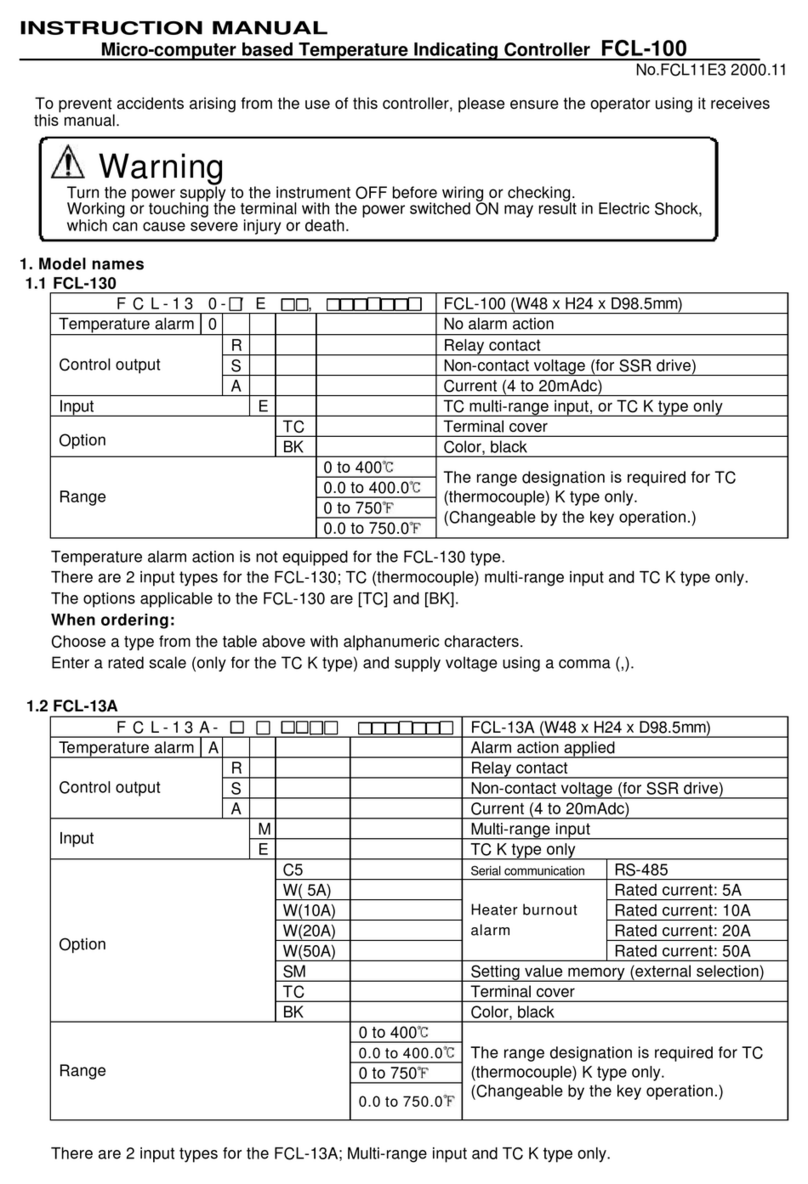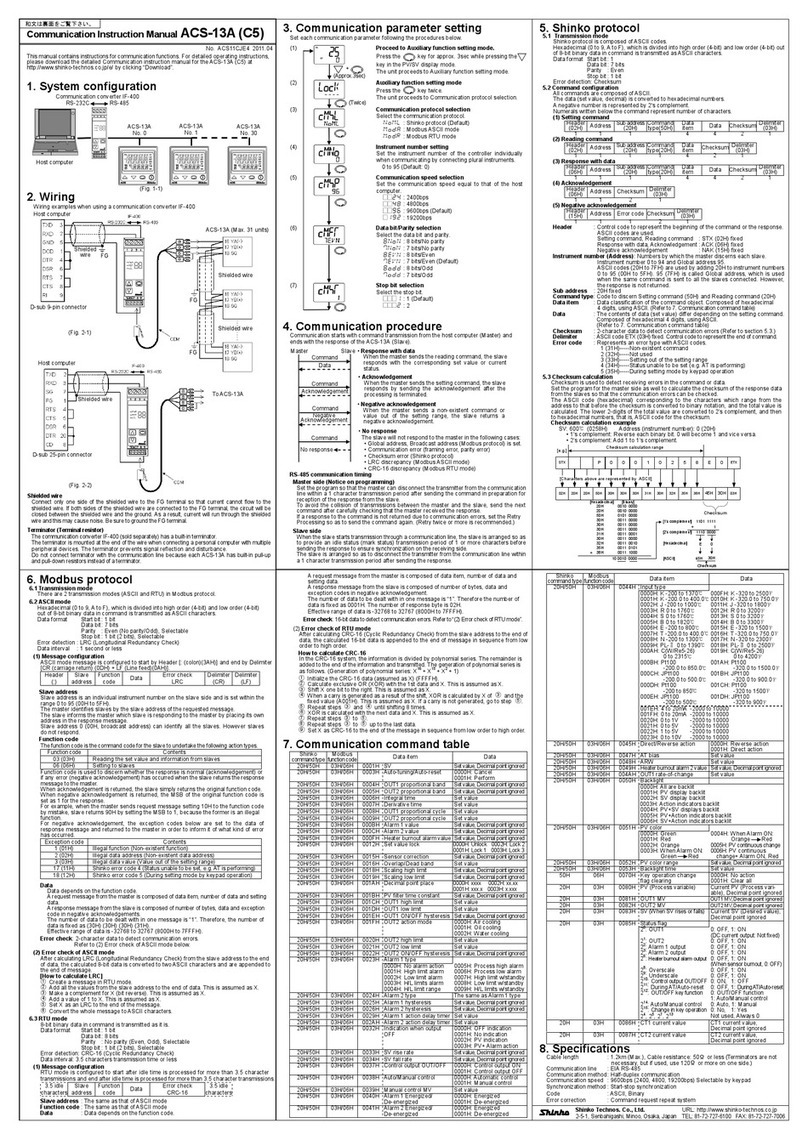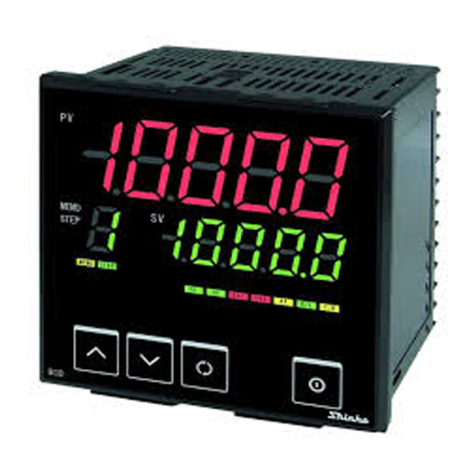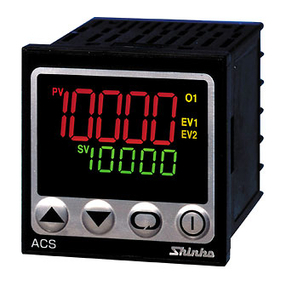
4
IMO CONTENTS FCR-13A
Communication protocol-------------------------------------------------------------- 27
(5) Auxiliary function setting mode 2
Scaling high limit value setting ------------------------------------------------------ 28
Scaling low limit value setting ------------------------------------------------------- 28
Decimal point place selection ------------------------------------------------------- 28
PV filter time constant setting ------------------------------------------------------- 29
Main output high limit setting -------------------------------------------------------- 29
Main output low limit setting --------------------------------------------------------- 29
Main output ON/OFF action hysteresis setting --------------------------------- 29
Cooling action mode selection ------------------------------------------------------ 30
Cooling output high limit setting ---------------------------------------------------- 30
Cooling output low limit setting ----------------------------------------------------- 30
Cooling output ON/OFF action hysteresis setting ------------------------------ 30
Alarm 1 (A1) action Energized/Deenergized selection ----------------------- 31
Alarm 2 (A2) action Energized/Deenergized selection ----------------------- 31
Alarm 1 (A1) hysteresis setting ----------------------------------------------------- 31
Alarm 2 (A2) hysteresis setting ----------------------------------------------------- 31
Alarm 1 (A1) action delayed timer setting ---------------------------------------- 32
Alarm 2 (A2) action delayed timer setting ---------------------------------------- 32
External setting input high limit setting -------------------------------------------- 32
External setting input low limit setting --------------------------------------------- 32
Transmission output selection ------------------------------------------------------ 33
Transmission output high limit setting --------------------------------------------- 33
Transmission output low limit setting ---------------------------------------------- 33
Display selection when control output is off ------------------------------------- 34
Main setting value rising rate setting ---------------------------------------------- 34
Main setting value falling rate setting --------------------------------------------- 34
Output selection when input burnout ---------------------------------------------- 35
(6) Program mode
Program control change -------------------------------------------------------------- 37
Step 1 to 4 time setting --------------------------------------------------------------- 37
Step 5 to 7 time setting --------------------------------------------------------------- 38
(7) Auto/Manual control change ------------------------------------------------------------ 38
(8) Control output OFF function ------------------------------------------------------------- 39
(9) Output manipulating value and Step rest time indication mode ---------------- 40
5 Setting value memory function ----------------------------------------------------- 41



































